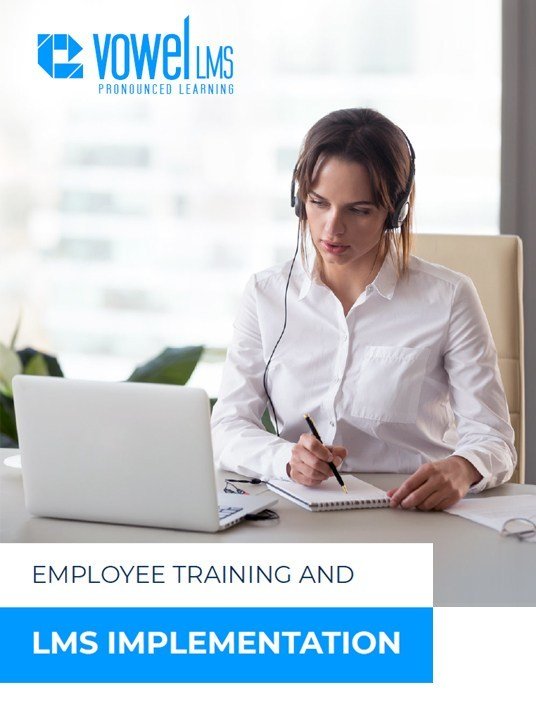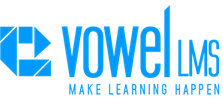Make Your Content Drive Learners To Your LMS
One of the key reasons organizations want to implement a Learning Management System is to bring structure and visibility to the learning effort.
As an organization grows, it becomes critical to ensure that there is a way to ensure that team members have the knowledge they need to perform their job to their fullest potential. The L&D department needs to work hand in hand with various other departments to help them realize this goal.

Defining an eLearning curriculum can seem like a daunting task. However, if you are just starting up with starting a learning program in the organization plan to start with areas where you can get the best ROI. Start with these areas and go deep so that you can gain the most benefits and then slowly expand to other areas.
When we talk about a curriculum in eLearning—it refers to the entire gamut of learning objectives, syllabus, courses, lessons, assessments, classroom training and other activities that make up your program. The eLearning curriculum is the keystone of your LMS implementation.
Your audience is going to come with great expectations about the content & material you have to offer. That your material has to be good, effective and relevant is a given but the platform you deliver it on matters a great deal too.
You will have invested months in creating and curating a lot of great content and are super excited to roll it out to your audience. But if your users either can’t find what they want OR find the user experience of finding and consuming the content to be frustrating, all your efforts will go down the drain.
A successful LMS implementation is all about the optimum presentation of your eLearning curriculum to your audience.
At the risk of oversimplifying, I’d say that a successful learning program implementation needs to focus on the following areas:
- Content
- People
- Context
In the eLearning industry, we are used to taking the horse to the water and making it drink the water. But hey, it doesn't have to like it!
Learning is rapidly shifting across industries from being a push phenomenon to a pull-based one. Users are being rapidly bombarded with content from a variety of sources—push notifications from apps, their Google Feed, WhatsApp, YouTube, and whatnot. Users are choosing to decide what to consume. You are in a battle for their attention.
Delivering the content that your audience needs, in the right context is the key to success.
Content—Rather, 'The Right Content'
Delivering good quality content that your audience wants in a format that works best is your goal.
Need Analysis
Finding what your audience needs, is an ongoing process. It all starts with 'Need Analysis'. This can come from various sources like audience surveys, performance evaluations as well as one on ones with key people in the organization. Here are some questions to help you discover this. These aren't exhaustive but they will get you started.
Which topics does your staff struggle with?
- What areas of compliance have to be dealt with? Example: Prevention of sexual harassment (POSH)
- What kind of training is needed frequently? Example: Induction training
- Do we need to change certain types of behavior in the organization?
- What training can lead to an increase in performance and efficiencies in the organization?
Content Sources & Formats
The above exercise in conjunction with audience profiling will give you a list of topics on which you need to curate or create content. A lot of this content may be already publicly available on the internet while some you might need to source internally and create some from scratch.
Typically, LMS's can track SCORM, AICC & xAPI compliant objects. However, some also allow you to track content like web pages, videos, PowerPoints and PDFs. You can choose the right arrangement depending on your tracking needs, what your LMS supports and most importantly what is most effective to deliver your topic!
People
A key part of delivering effective learning is knowing your audience. You should consider profiling your audience—especially by factors that will affect their learning requirements. This profiling data if available in your LMS can help you not only contextually deliver content but also get very interesting reports. If your LMS allows it, allow your audience to tweak some of this data themselves. An LMS can also allow you to map people to skills and skill levels. If you invest in this, it can help automate a lot of your learning delivery.
Context
Once you have gone through the exercise of needs analysis & audience profiling, you will realize that while some areas of learning apply to almost everyone, some apply only to specific groups of people or in some cases only a few individuals. This can be influenced by their job role, their location, seniority or other factors.
Overtime your LMS will end up building a large content repository that will be your pride. As your audience and content both grow, matching them in the right context and delivering them to your audience becomes critical. Contextual delivery and recommendations in the LMS can help your audience discover the content they need. In some cases, you can also drive content consumption by designing personalized learning interventions and allowing peer recommendations.
Context is not just important between a certain job role or person and content. It is as important in the order in which content should be consumed. An LMS can help you set this by creating learning paths & journeys, set prerequisites and blend various media in the right context for effective learning.
Content is king. And delivered in the right context it rules. Without the right eLearning curriculum that achieves this goal and a Learning Management System that allows you to deliver the curriculum effectively, implementing a learning program can only go so far in terms of effectiveness. Download the eBook The Complete LMS Implementation Guide To Ensure Employee Training Success to discover more about the successful implementation of an LMS for achieving better effects in your organization. Join the webinar to delve into the secrets behind a victorious LMS implementation.


